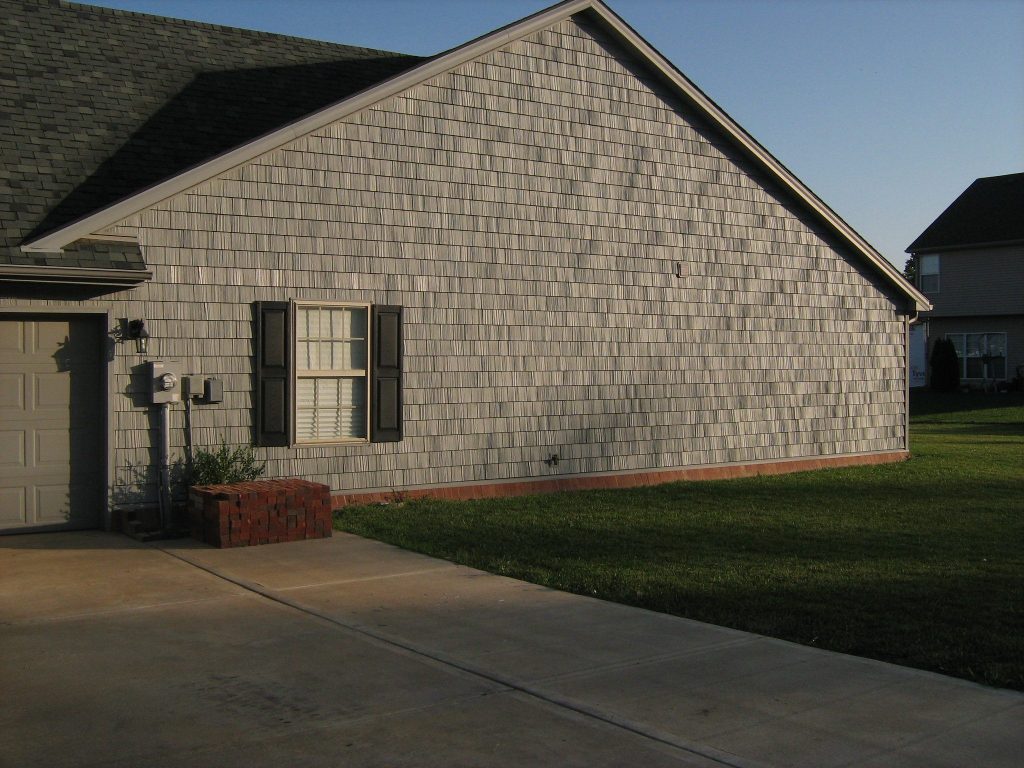Home maintenance can be challenging, especially when buying a used home from someone who hasn’t paid as much attention to their home as they should have.
Homebuyers encounter a common problem: their new home’s siding is not in the best shape. The standard solution to this problem is to put new siding on the house over the existing wood siding. Either aluminum or vinyl siding is considerably cheaper than tearing off the existing wood siding and putting on new.
Cost of Vinyl Siding
Vinyl siding used to be less costly than aluminum siding, but that has changed over the years. This change has been chiefly due to improvements in vinyl siding, while aluminum siding has remained relatively stagnant.
Today, the cost differential between the two is minimal, with vinyl siding having a better life expectancy than aluminum, holding its color better. The exception is vinyl-clad aluminum siding, which combines the benefits and features of both but costs more than either.
Vinyl Cedar Shake Make Siding
A more recent development in vinyl siding is vinyl cedar shake siding. This vinyl siding has been molded to look like cedar board shakes installed as siding and then stained with an oil-based exterior house stain.
While cedar board shakes are not standard siding for homes, they are sometimes used for design appeal. In the case of vinyl cedar shake siding, the shake pattern looks better than simple vinyl siding designed to look like a clapboard.
Wood Siding vs. Vinyl Siding
This wood siding is also thicker than standard vinyl siding. The added strength and durability come from the surface going in and out more, putting material off the plane of the beam.
Together, these improvements give vinyl shake siding a longer life expectancy—as much as 50 years—without repainting. Due to the material and geometry of the wood siding, the siding is also much less prone to dents and breakage.
Pricing for installing a home’s exterior refinished with vinyl shake siding varies considerably, ranging from $3,500 to over $20,000. How big the house plays a factor, whether or not it is one story or two, and how complex the exterior repair itself is also varied.
A home that is a simple box is much less labor-intensive than one where the walls have a lot of protrusions and indentations in the layout. Regardless, homeowners can save about 50% on the overall cost by doing the job themselves.
Necassary Materials
Finding the necessary materials and accessories for residing in a home with vinyl shake siding isn’t tricky. Most home improvement centers and lumber yards will carry one or two lines of the shake siding; however, it must be custom ordered. This is an advantage, as the material will be delivered directly to the home, saving the homeowners the problem of transporting it.
Compared to other home cover systems, vinyl siding is considerably easier to install. The system is designed to work together, with the pieces snapping together. While some fasteners are still required, this snap-together feature makes installing and fastening to the home much more accessible.
Channels are installed on the inside and outside corners, eliminating any problem with inaccurate cutting and making the corners look neat and clean. Cutting doesn’t require special tooling and can be done with ordinary tin snips. Nevertheless, it is worth investing in a pneumatic nailer, making the job faster and easier.
Styles and Colors
Various companies manufacture dozens of styles and colors of vinyl shake siding. The bare material costs around $300 per 100 sq. ft. or “square” (as in roofing) and weighs about 35 pounds.
The total material and installation cost for installing the shake siding in a home can easily be calculated by determining the square footage of the home’s exterior and then multiplying it by the price per square.
Some extra material should be ordered, and trim strips, fascia, and material to cover the soffits will also need to be bought.

Cedar shake vinyl siding
Insulated vinyl siding is slightly more expensive but can be worth the investment, especially for homeowners whose homes are not well-insulated. The house and an added layer of rigid foam insulation can save homeowners an average of 14.2% off existing heating and cooling bills.
One of the advantages of siding a home with vinyl shake siding is the resale value. First, a recently remodeled home will sell more easily and expensively than one that needs a siding job.
The surprising part is that the average lifetime increase in home value is 76.7%, based on the cost of having the job professionally contracted.
If the homeowner does the job themselves, they can make money by re-siding the home before selling it.
That raises the question of the best color if the home is to be resold. That depends partly on the area, so it is always best to check out the colors of other houses in the neighborhood and the city before deciding. Different regions of the country tend to have predominant home colors, which are popular.
But in general, some of the best colors are:
- off-white
- light grey
- blue-grey
- light blue yellow
Homes in these colors tend to sell faster than others.
Remember that if a home is small, painting it in a darker color can make it appear larger.




